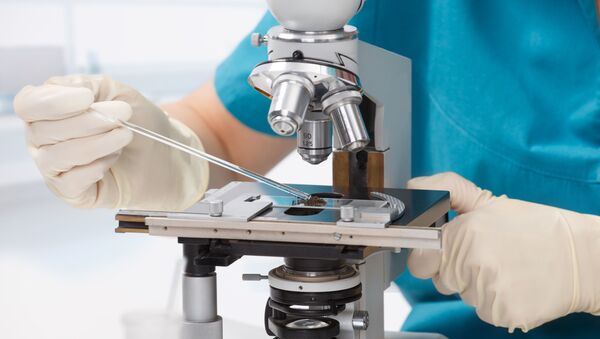The invention can be applied to microscopes in a wide range of areas — from nuclear physics and cancer treatment to archaeology and volcanology. The research findings were published by Nature Research in its prestigious journal, Scientific Reports.
Modern science requires high-speed scanning systems that can carry out highly accurate analyses of the internal structure of samples, as well as receive and process large amounts of information. These are next-generation automated microscopes (AM), or robots equipped with high-precision mechanical and optical components, as well as high-speed video cameras. Operating speeds are a million times higher than those of human microscope operators.
So-called dark matter is a mysterious substance that is believed to account for a large part of the matter in the universe. According to scientific estimates, every galaxy contains about 8 to 10 times more dark matter than ordinary observable matter, and dark matter is what holds stars in place without letting them "scatter".
"In our research, we have tested the technique for the fully automated optical scanning of thin samples that next-generation automated microscopes will be based on", NUST MISiS and INFN researcher Andrei Alexandrov told Sputnik. "We analysed its performance and estimated the achievable scanning speed to compare it with conventional techniques".
READ MORE: Scientists Reveal First Known Interstellar Meteor May Have Hit Earth in 2014
"The automated vision technology allows automated microscopes to identify objects in real time mode and decide whether images are worth processing or should be shifted elsewhere", Alexandrov said. "Today, in order to process a large stream of images (about 2 gigabytes per second per video camera) and accelerate intense computing, the CUDA parallel computing platform and GPU boards are used. We, however, have implemented a technology to incline the focal plane of the objective lens".
"The efficiency and accuracy of this approach proved comparable to traditional ones, while the scanning speed proved proportional to the number of cameras", the researcher said. "Thus, we can speak about significant progress".
"Future scientific experiments using these detectors will focus on searching for dark matter particles, studying neutrino physics, researching ion fragmentation for the needs of hadron cancer therapy, and protecting interplanetary mission crews from space radiation", Alexandrov added.





